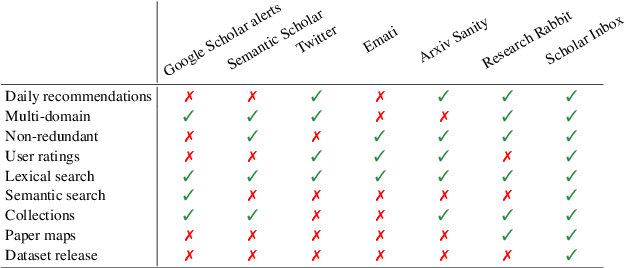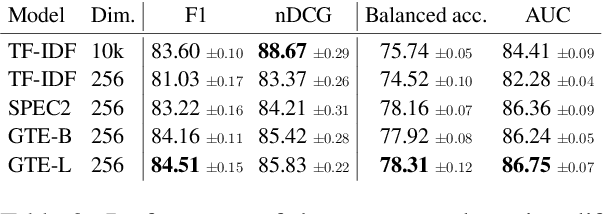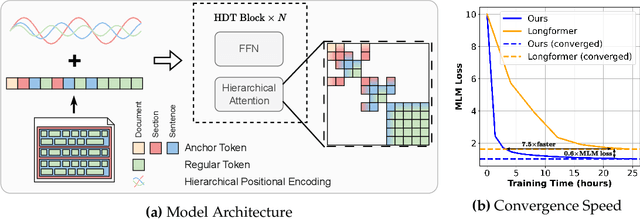Haoyu He
PhyAVBench: A Challenging Audio Physics-Sensitivity Benchmark for Physically Grounded Text-to-Audio-Video Generation
Dec 30, 2025Abstract:Text-to-audio-video (T2AV) generation underpins a wide range of applications demanding realistic audio-visual content, including virtual reality, world modeling, gaming, and filmmaking. However, existing T2AV models remain incapable of generating physically plausible sounds, primarily due to their limited understanding of physical principles. To situate current research progress, we present PhyAVBench, a challenging audio physics-sensitivity benchmark designed to systematically evaluate the audio physics grounding capabilities of existing T2AV models. PhyAVBench comprises 1,000 groups of paired text prompts with controlled physical variables that implicitly induce sound variations, enabling a fine-grained assessment of models' sensitivity to changes in underlying acoustic conditions. We term this evaluation paradigm the Audio-Physics Sensitivity Test (APST). Unlike prior benchmarks that primarily focus on audio-video synchronization, PhyAVBench explicitly evaluates models' understanding of the physical mechanisms underlying sound generation, covering 6 major audio physics dimensions, 4 daily scenarios (music, sound effects, speech, and their mix), and 50 fine-grained test points, ranging from fundamental aspects such as sound diffraction to more complex phenomena, e.g., Helmholtz resonance. Each test point consists of multiple groups of paired prompts, where each prompt is grounded by at least 20 newly recorded or collected real-world videos, thereby minimizing the risk of data leakage during model pre-training. Both prompts and videos are iteratively refined through rigorous human-involved error correction and quality control to ensure high quality. We argue that only models with a genuine grasp of audio-related physical principles can generate physically consistent audio-visual content. We hope PhyAVBench will stimulate future progress in this critical yet largely unexplored domain.
MemoryGraft: Persistent Compromise of LLM Agents via Poisoned Experience Retrieval
Dec 18, 2025Abstract:Large Language Model (LLM) agents increasingly rely on long-term memory and Retrieval-Augmented Generation (RAG) to persist experiences and refine future performance. While this experience learning capability enhances agentic autonomy, it introduces a critical, unexplored attack surface, i.e., the trust boundary between an agent's reasoning core and its own past. In this paper, we introduce MemoryGraft. It is a novel indirect injection attack that compromises agent behavior not through immediate jailbreaks, but by implanting malicious successful experiences into the agent's long-term memory. Unlike traditional prompt injections that are transient, or standard RAG poisoning that targets factual knowledge, MemoryGraft exploits the agent's semantic imitation heuristic which is the tendency to replicate patterns from retrieved successful tasks. We demonstrate that an attacker who can supply benign ingestion-level artifacts that the agent reads during execution can induce it to construct a poisoned RAG store where a small set of malicious procedure templates is persisted alongside benign experiences. When the agent later encounters semantically similar tasks, union retrieval over lexical and embedding similarity reliably surfaces these grafted memories, and the agent adopts the embedded unsafe patterns, leading to persistent behavioral drift across sessions. We validate MemoryGraft on MetaGPT's DataInterpreter agent with GPT-4o and find that a small number of poisoned records can account for a large fraction of retrieved experiences on benign workloads, turning experience-based self-improvement into a vector for stealthy and durable compromise. To facilitate reproducibility and future research, our code and evaluation data are available at https://github.com/Jacobhhy/Agent-Memory-Poisoning.
High-Quality Proposal Encoding and Cascade Denoising for Imaginary Supervised Object Detection
Nov 11, 2025Abstract:Object detection models demand large-scale annotated datasets, which are costly and labor-intensive to create. This motivated Imaginary Supervised Object Detection (ISOD), where models train on synthetic images and test on real images. However, existing methods face three limitations: (1) synthetic datasets suffer from simplistic prompts, poor image quality, and weak supervision; (2) DETR-based detectors, due to their random query initialization, struggle with slow convergence and overfitting to synthetic patterns, hindering real-world generalization; (3) uniform denoising pressure promotes model overfitting to pseudo-label noise. We propose Cascade HQP-DETR to address these limitations. First, we introduce a high-quality data pipeline using LLaMA-3, Flux, and Grounding DINO to generate the FluxVOC and FluxCOCO datasets, advancing ISOD from weak to full supervision. Second, our High-Quality Proposal guided query encoding initializes object queries with image-specific priors from SAM-generated proposals and RoI-pooled features, accelerating convergence while steering the model to learn transferable features instead of overfitting to synthetic patterns. Third, our cascade denoising algorithm dynamically adjusts training weights through progressively increasing IoU thresholds across decoder layers, guiding the model to learn robust boundaries from reliable visual cues rather than overfitting to noisy labels. Trained for just 12 epochs solely on FluxVOC, Cascade HQP-DETR achieves a SOTA 61.04\% mAP@0.5 on PASCAL VOC 2007, outperforming strong baselines, with its competitive real-data performance confirming the architecture's universal applicability.
Dual-Thresholding Heatmaps to Cluster Proposals for Weakly Supervised Object Detection
Sep 10, 2025Abstract:Weakly supervised object detection (WSOD) has attracted significant attention in recent years, as it does not require box-level annotations. State-of-the-art methods generally adopt a multi-module network, which employs WSDDN as the multiple instance detection network module and multiple instance refinement modules to refine performance. However, these approaches suffer from three key limitations. First, existing methods tend to generate pseudo GT boxes that either focus only on discriminative parts, failing to capture the whole object, or cover the entire object but fail to distinguish between adjacent intra-class instances. Second, the foundational WSDDN architecture lacks a crucial background class representation for each proposal and exhibits a large semantic gap between its branches. Third, prior methods discard ignored proposals during optimization, leading to slow convergence. To address these challenges, we first design a heatmap-guided proposal selector (HGPS) algorithm, which utilizes dual thresholds on heatmaps to pre-select proposals, enabling pseudo GT boxes to both capture the full object extent and distinguish between adjacent intra-class instances. We then present a weakly supervised basic detection network (WSBDN), which augments each proposal with a background class representation and uses heatmaps for pre-supervision to bridge the semantic gap between matrices. At last, we introduce a negative certainty supervision loss on ignored proposals to accelerate convergence. Extensive experiments on the challenging PASCAL VOC 2007 and 2012 datasets demonstrate the effectiveness of our framework. We achieve mAP/mCorLoc scores of 58.5%/81.8% on VOC 2007 and 55.6%/80.5% on VOC 2012, performing favorably against the state-of-the-art WSOD methods. Our code is publicly available at https://github.com/gyl2565309278/DTH-CP.
MDPO: Overcoming the Training-Inference Divide of Masked Diffusion Language Models
Aug 18, 2025Abstract:Diffusion language models, as a promising alternative to traditional autoregressive (AR) models, enable faster generation and richer conditioning on bidirectional context. However, they suffer from a key discrepancy between training and inference: during inference, MDLMs progressively reveal the structure of the generated sequence by producing fewer and fewer masked tokens, whereas this structure is ignored in training as tokens are masked at random. Although this discrepancy between training and inference can lead to suboptimal performance, it has been largely overlooked by previous works, leaving closing this gap between the two stages an open problem. To address this, we frame the problem of learning effective denoising trajectories as a sequential decision-making problem and use the resulting framework to apply reinforcement learning. We propose a novel Masked Diffusion Policy Optimization (MDPO) to exploit the Markov property diffusion possesses and explicitly train the model under the same progressive refining schedule used at inference. MDPO matches the performance of the previous state-of-the-art (SOTA) method with 60x fewer gradient updates, while achieving average improvements of 9.6% on MATH500 and 54.2% on Countdown over SOTA when trained within the same number of weight updates. Additionally, we improve the remasking strategy of MDLMs as a plug-in inference replacement to overcome the limitation that the model cannot refine tokens flexibly. This simple yet effective training-free strategy, what we refer to as RCR, consistently improves performance and yields additional gains when combined with MDPO. Our findings establish great potential for investigating the discrepancy between pre-training and inference of MDLMs. Code: https://github.com/autonomousvision/mdpo. Project Page: https://cli212.github.io/MDPO/.
Membership Inference Attack with Partial Features
Aug 08, 2025Abstract:Machine learning models have been shown to be susceptible to membership inference attack, which can be used to determine whether a given sample appears in the training data. Existing membership inference methods commonly assume that the adversary has full access to the features of the target sample. This assumption, however, does not hold in many real-world scenarios where only partial features information is available, thereby limiting the applicability of these methods. In this work, we study an inference scenario where the adversary observes only partial features of each sample and aims to infer whether this observed subset was present in the training set of the target model. We define this problem as Partial Feature Membership Inference (PFMI). To address this problem, we propose MRAD (Memory-guided Reconstruction and Anomaly Detection), a two-stage attack framework. In the first stage, MRAD optimizes the unknown feature values to minimize the loss of the sample. In the second stage, it measures the deviation between the reconstructed sample and the training distribution using anomaly detection. Empirical results demonstrate that MRAD is effective across a range of datasets, and maintains compatibility with various off-the-shelf anomaly detection techniques. For example, on STL-10, our attack achieves an AUC of around 0.6 even with 40% of the missing features.
Circumventing Backdoor Space via Weight Symmetry
Jun 09, 2025Abstract:Deep neural networks are vulnerable to backdoor attacks, where malicious behaviors are implanted during training. While existing defenses can effectively purify compromised models, they typically require labeled data or specific training procedures, making them difficult to apply beyond supervised learning settings. Notably, recent studies have shown successful backdoor attacks across various learning paradigms, highlighting a critical security concern. To address this gap, we propose Two-stage Symmetry Connectivity (TSC), a novel backdoor purification defense that operates independently of data format and requires only a small fraction of clean samples. Through theoretical analysis, we prove that by leveraging permutation invariance in neural networks and quadratic mode connectivity, TSC amplifies the loss on poisoned samples while maintaining bounded clean accuracy. Experiments demonstrate that TSC achieves robust performance comparable to state-of-the-art methods in supervised learning scenarios. Furthermore, TSC generalizes to self-supervised learning frameworks, such as SimCLR and CLIP, maintaining its strong defense capabilities. Our code is available at https://github.com/JiePeng104/TSC.
Scholar Inbox: Personalized Paper Recommendations for Scientists
Apr 11, 2025



Abstract:Scholar Inbox is a new open-access platform designed to address the challenges researchers face in staying current with the rapidly expanding volume of scientific literature. We provide personalized recommendations, continuous updates from open-access archives (arXiv, bioRxiv, etc.), visual paper summaries, semantic search, and a range of tools to streamline research workflows and promote open research access. The platform's personalized recommendation system is trained on user ratings, ensuring that recommendations are tailored to individual researchers' interests. To further enhance the user experience, Scholar Inbox also offers a map of science that provides an overview of research across domains, enabling users to easily explore specific topics. We use this map to address the cold start problem common in recommender systems, as well as an active learning strategy that iteratively prompts users to rate a selection of papers, allowing the system to learn user preferences quickly. We evaluate the quality of our recommendation system on a novel dataset of 800k user ratings, which we make publicly available, as well as via an extensive user study. https://www.scholar-inbox.com/
ST-MoE-BERT: A Spatial-Temporal Mixture-of-Experts Framework for Long-Term Cross-City Mobility Prediction
Oct 18, 2024



Abstract:Predicting human mobility across multiple cities presents significant challenges due to the complex and diverse spatial-temporal dynamics inherent in different urban environments. In this study, we propose a robust approach to predict human mobility patterns called ST-MoE-BERT. Compared to existing methods, our approach frames the prediction task as a spatial-temporal classification problem. Our methodology integrates the Mixture-of-Experts architecture with BERT model to capture complex mobility dynamics and perform the downstream human mobility prediction task. Additionally, transfer learning is integrated to solve the challenge of data scarcity in cross-city prediction. We demonstrate the effectiveness of the proposed model on GEO-BLEU and DTW, comparing it to several state-of-the-art methods. Notably, ST-MoE-BERT achieves an average improvement of 8.29%.
HDT: Hierarchical Document Transformer
Jul 11, 2024



Abstract:In this paper, we propose the Hierarchical Document Transformer (HDT), a novel sparse Transformer architecture tailored for structured hierarchical documents. Such documents are extremely important in numerous domains, including science, law or medicine. However, most existing solutions are inefficient and fail to make use of the structure inherent to documents. HDT exploits document structure by introducing auxiliary anchor tokens and redesigning the attention mechanism into a sparse multi-level hierarchy. This approach facilitates information exchange between tokens at different levels while maintaining sparsity, thereby enhancing computational and memory efficiency while exploiting the document structure as an inductive bias. We address the technical challenge of implementing HDT's sample-dependent hierarchical attention pattern by developing a novel sparse attention kernel that considers the hierarchical structure of documents. As demonstrated by our experiments, utilizing structural information present in documents leads to faster convergence, higher sample efficiency and better performance on downstream tasks.
 Add to Chrome
Add to Chrome Add to Firefox
Add to Firefox Add to Edge
Add to Edge